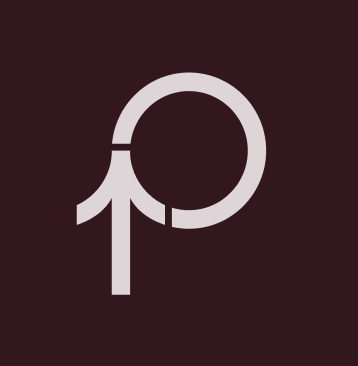How to Set Up a 401(k) Plan for a Small Business

What Are the Benefits of Offering a 401(k) to employees?
Offering a 401(k) to employees can help attract and retain talent. Employees value retirement plans and often seek employers who provide them. A 401(k) promotes financial security by helping your staff save for the future. Employers can also benefit from tax advantages. Contributions made by the company are tax-deductible, lowering taxable income.
Matching employee contributions can also boost participation and morale, fostering a positive work environment. Employees may feel more engaged and loyal, which will in turn reduce turnover rates.
Providing a 401(k) plan enhances the company's reputation as a supportive employer, improving overall job satisfaction. Retirement planning resources can further educate staff, increasing financial literacy.
In summary, offering a 401(k) benefits both employers and employees by improving retention rates, providing more financial security, and thereby helping a company’s reputation as being a good place to work.
How to Set Up a 401(k) Plan for Your Employees
Setting up a 401(k) plan for employees involves several steps. First, choose a plan provider. Research and select a company that offers the best services and fees for your needs. You may want to discuss with your accountant, financial advisor, or benefits administrator for advice.
Next, decide on the plan features. Determine the type of 401(k) plan, whether you choose a Safe Harbor 401(k) or go with a traditional 401(k). Many plans will also let you add a Roth 401(k), which allows employees to make post-tax contributions.
Once you choose a plan, you’ll need to establish vesting schedules and employer match options.
All employers who offer a 401(k) plan need a plan document that outlines all the specifics. If you work with a plan provider, they will likely create this document for you. Regardless of who drafts the plan, the employer is legally bound by the terms of the document.
Before you can offer the 401(k) to your employees, you need to set up a trust to hold the plan's assets. This ensures funds are used exclusively for participants and their beneficiaries. You must choose at least one trustee to handle contributions, plan investments, and distributions. Choosing the right trustee is extremely important, because they are responsible for the financial integrity of the plan.
Once the plan is established, you can start enrolling employees. Depending on the type of plan you offer, you can auto enroll your workers into the plan and give them the choice to opt out. Offer educational sessions to help them understand the benefits and options available.
Finally, maintain and monitor the plan. Ensure ongoing compliance with federal regulations, regularly review investment options, and provide continuous education to employees.
By following these steps, you can establish a 401(k) plan that benefits both your company and your employees.
What Types of 401(k) Plans are Available for Small Business Owners?
There are several types of 401(k) plans available for small business owners, each with its own advantages and considerations:
- Traditional 401(k): This is the most common type of 401(k) plan, where employees contribute pre-tax dollars, potentially lowering their taxable income. Employers may choose to match a portion of employee contributions. Businesses must follow specific IRS requirements that include annual nondiscrimination testing.
- Safe Harbor 401(k): This plan is designed to meet specific IRS requirements, which eliminates the need for annual nondiscrimination testing. Employers are required to make mandatory contributions for eligible employees.
- Starter 401(k): Starter 401(k) plans, authorized by SECURE 2.0, allow small businesses to offer a simplified, low-cost 401(k) with contribution limits lower than traditional 401(k)s and IRAs. Starter 401(k) plans do not allow employers to offer matching contributions.
- SIMPLE IRA: This plan is a simplified retirement savings plan for small businesses with 100 or fewer employees. It offers lower administrative costs compared to traditional 401(k) plans but has lower contribution limits.
- Solo 401(k) (also known as Individual 401(k) or Self-Employed 401(k)): This plan is specifically designed for self-employed individuals or business owners with no employees (other than a spouse). It allows for higher contribution limits compared to other 401(k) options.
- Roth 401(k): This plan allows employees to contribute after-tax dollars and qualified withdrawals during retirement are tax-free.
The best type of 401(k) plan for your small business depends on a variety of factors, including the number of employees, budget, and desired features.
We recommend consulting with a retirement plan specialist to determine the most suitable option for your specific circumstances. Schedule a call with our experts.
What Is a Safe Harbor 401(k) Retirement Plan?
A Safe Harbor 401(k) is a retirement plan designed for small businesses. It requires employers to make mandatory contributions to employees' accounts, either as a match or a non-elective contribution.
In return, Safe Harbor plans are exempt from annual IRS nondiscrimination testing, which ensures that the plan benefits all employees fairly, regardless of their income level. This makes Safe Harbor 401(k) plans a simpler and more attractive option for small business owners.
What Is a Starter 401(k) Retirement Plan?
A Starter 401(k) is a simplified retirement savings plan designed for small businesses that don't currently offer any retirement benefits. It's a new type of plan introduced by the SECURE 2.0 Act of 2022 and can be adopted starting in 2024. Key features include:
- Automatic Enrollment: Employees are automatically enrolled at a default contribution rate, typically 3% but can be up to 15% of their pay. They can choose to opt-out or change their contribution level.
- Employee Contributions Only: Unlike traditional or Safe Harbor 401(k) plans, Starter 401(k)s do not allow employer contributions.
- Lower Contribution Limits: Annual contribution limits for Starter 401(k)s are lower than those of traditional 401(k) plans. In 2024, the annual limit is $6,000.
The Starter 401(k) aims to make it easier for small businesses to offer retirement benefits by reducing administrative complexity and costs. It's a good option for businesses that want to provide a basic retirement savings option for their employees but don't have the resources for a more complex plan.
FAQ
Am I Required to Offer a Retirement Plan?
While federal law doesn't require businesses to offer retirement plans, some states, like California, Illinois, and Oregon, have enacted legislation mandating retirement savings programs for businesses that don't offer their own.
The state-mandated plans are often automatic-enrollment Individual Retirement Accounts (IRAs) with opt-out options for employees. They don’t usually allow employer contributions.
How Much Should an Employer Contribute to the Plan?
The amount an employer contributes to a 401(k) plan varies depending on the type of plan and company policies. Here are some common approaches:
- Matching Contributions: Many employers offer a matching contribution, typically a percentage of the employee's contribution up to a certain limit. A common match is 50% of employee contributions up to 6% of their salary.
- Non-Elective Contributions: Some employers make contributions regardless of whether the employee contributes, often a fixed percentage of the employee's salary. Safe Harbor 401(k) plans require a minimum non-elective contribution.
- Profit-Sharing Contributions: Some companies contribute a portion of their profits to employees' 401(k) plans.
The optimal contribution amount for your business depends on various factors, such as your budget, company size, and industry standards.
How Much Does It Cost to Set Up a 401(k) for a Small Business?
The cost of setting up a 401(k) for a small business can vary depending on the provider and plan features. Initial setup fees typically range from $500 to $3,000.
The SECURE Act offers tax credits of up to $5,000 annually for the first three years to cover startup costs for eligible small businesses. Ongoing administrative fees, investment fees, and other expenses should also be considered.
Read more: 401(k) Fees: What Plan Sponsors and Participants Need to Know
How Long Does It Take for a Small Business to Set up a 401(k)?
The time to set up a 401(k) for a small business can vary depending on the complexity of the plan and the provider you choose. Generally, it can take anywhere from a few weeks to a few months.
Here's a breakdown of the typical timeline:
- Choosing a provider and plan type: 1-2 weeks
- Drafting and approving plan documents: 2-4 weeks
- Establishing a trust for plan assets: 1-2 weeks
- Setting up payroll deductions: 1-2 weeks
- Educating employees about the plan: Ongoing
Choosing a provider who specializes in small business 401(k) plans and offers streamlined onboarding processes can dramatically help expedite the setup.
Ready to speak with a retirement expert? Schedule a call.




